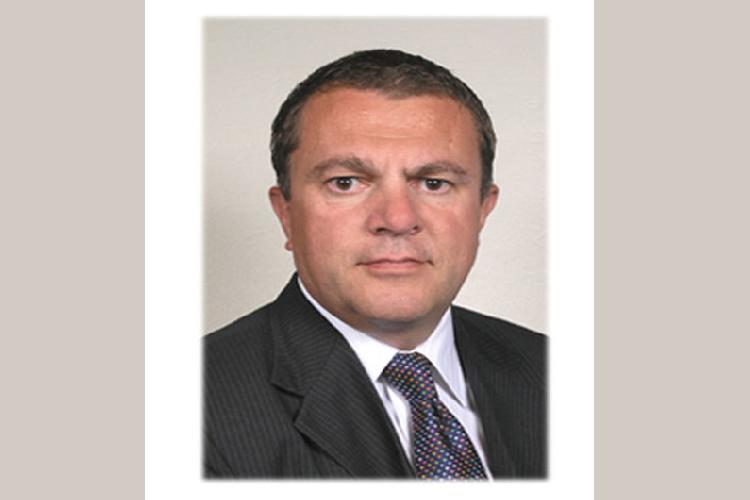
Challenging economic climate across GCC may present opportunities for Bahrain’s real estate sector
As GCC markets are forecasted to face prolonged economic challenges over the coming months, Bahrain looks set to be cushioned from the blow by continued infrastructure investment from the GCC aid fund, according to the global property consulting firm CBRE as part of its Q4 2015 Bahrain MarketView.
Despite negative impacts of the on-going oil slump, the real estate sector in Bahrain has proven resilient, with solid returns still considered achievable, affording hard pressed investors the opportunity for potential growth in an otherwise unpredictable market.
This was underlined by the 7% growth achieved within the construction sector during early 2015, as a raft of new development projects were launched across all real estate asset classes, but notably in the retail, hospitality and residential sectors.
Steve Mayes, Director, Middle East Research, CBRE Bahrain commented: “This growth was underpinned by investment in large scale infrastructure projects, supported by the US$10 billion GCC aid fund, including the US$ multi-billion Bahrain Airport expansion and the expansion of government affordable and social housing schemes, are also at the forefront of this trend.”
Retail Market
The retail sector continues to dominate real estate activity in Bahrain, with Q4 2015 witnessing several significant openings and new announcements.
Diyar Al Muharraq, in a joint venture with Emirati developer Eagle Hills, announced the launch of Marassi Galleria in Q4 2015. The project is a 178,000m² urban lifestyle retail and entertainment district with family plaza and festival waterfront dining, forming an integral component of the 875,000m² Marassi Al Bahrain project.
This comes soon after the opening of Dragon City at Diyar Al Muharraq. This new project is a unique retail destination featuring Chinese goods and establishments with a total of 780 shop units spread over 55,000m². It opened its doors to the public at the end of December 2015.
“Community malls serving new residential districts continue to emerge as a dominant theme and nowhere is this more evident than in New Janabiya where no less than four separate malls under development or planned. The 5,000m² Al Mercado, anchored by Al Osra supermarket, is well under way and three other retail projects totaling nearly 50,000m² of leasable space are being considered,” said Mayes.
Hospitality Sector
According to the report, Q4 2015 heralded a period of consolidation in the hospitality sector, with no major new announcements but steady progress made towards the launch of two new developments in early 2016. The Rotana Downtown in central Manama, along with Wyndham Grand at Bahrain Bay will add a further 509 rooms to the 5-Star hotel stock. Amongst others, the Marriott Residence Inn at Water Garden City is also expected to be completed in 2016.
Emaar Hospitality Group will reportedly build five new hotels in the Kingdom by the end of 2018, keeping Diyar Al Muharraq firmly in the property news.
Residential Market
With the retail and hospitality sectors rapidly approaching saturation point and the commercial office market still laboring amidst weak demand, the residential sector may present opportunities for investors to leverage key advantages that Bahrain enjoys over other GCC markets.
According to the recently published InterNations Expat Insider Survey 2015, Bahrain ranked highest of The Gulf countries for lifestyle, cost of living and education, at 17th globally ahead of the UAE, 19th and Oman, 24th.
Mayes commented: “If you also consider that real estate costs per square metre for apartments in Bahrain average US$2,072 and US$5,037 in the UAE and that transaction costs are significantly lower in Bahrain, a case can be made for the residential sector offering potential investment opportunities, supported by a low real estate cost base, attractive business costs and Bahrain’s popularity as a place to live for MENA and western expatriate families and bachelors.”
Opportunities also exist in the compound villa sector with strong occupancy levels in areas popular with expatriates, especially those with good access to the Saudi Causeway and popular schools.
Prime apartment sub markets also continue to fare well with Reef Island retaining its position as the most expensive apartment location, supported by strong demand. In addition, Amwaj Islands is emerging from a relatively dormant period with an increase in construction activity in the residential sector, underlining its continuing popularity as a lifestyle destination.
Office Market
The commercial office market continues to face stiff challenges with downside risks again appearing on the horizon. According to Business Monitor International, Bahrain’s traditional position as the regional centre for Islamic finance is now facing increasing competition from Dubai, Doha and Riyadh, which could lead to further suppression in demand for office space.
The oil price slump is likely to lead to consolidation of space requirements in the hydrocarbon sector, with the real potential for current expansion plans to be sidelined. Budgets to fund Ministry office projects may also be affected by the widely discussed cuts in short to medium term government spending.
“Average rentals for leading Grade A projects remain stable for now, typically quoted at between BD7 – 9 per m². Although, it is difficult to see how these levels can be maintained, with downward pressure on demand and with an additional 70,000m² of office space in Bahrain Bay and Seef coming on stream during H1 2016,” Mayes added.
The main demand source continues to be existing occupiers looking to consolidate or upgrade accommodation, although there is still some call for larger traditional offices in shell and core condition. This source of demand is however limited and has until now been led by government organisations and established international firms with an existing presence in the Kingdom.


























